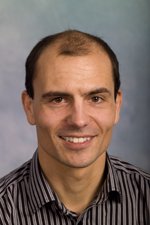 As promised, here are the thoughts of Soren Brage, an Investigator Scientist in Physical Activity at the MRC Epidemiology Unit in Cambridge on the recent BBC Horizon program featuring Michael Moseley taking part in a TV experiment to see how good high-intensity training (HIT) might be for his health.
As promised, here are the thoughts of Soren Brage, an Investigator Scientist in Physical Activity at the MRC Epidemiology Unit in Cambridge on the recent BBC Horizon program featuring Michael Moseley taking part in a TV experiment to see how good high-intensity training (HIT) might be for his health.
“One could point out some obvious feasibility issues on implementing HIT at population level as well as perhaps exposing the issue of [an] n=1 [sample], lack of proper control, millions other things changing at the same time,” he told me and pointed out that such problems did not seem to deter the program makers from coming to “a strong conclusion appropriate for mass consumption issue!”
“In terms of the specifics of the HIT approach, however, it has been known for decades that not all calories are created equal and that high-intensity training (HIT) impacts on glucose transport via induction of GLUT4 (and although labelled as non-responder for VO2max, the show’s host improved his glucose metabolism dramatically),” Brage adds.
He asks, however, whether Moseley was actually a non-responder for fitness? “Well, for absolute VO2max yes but he managed to shift his work-oxygen uptake curve to become a more efficient machine and could produce more physical work at follow-up, hence fitter from that perspective. And did he lose any weight? And would you really train only 3×20 sec all-out to change your VO2max? I think the training literature (from the 90s, if I remember correctly) suggested longer intervals for endurance / VO2max was the optimal approach, so one would need to submit the host to that regime to truly label him as a non-responder – or accept that the definition of responding was just very narrow!”
Brage was also concerned that the discussion of genetics put the emphasis back on the old “blame-your-genes” story. He pointed out that if one was to make a more explicit case of not equating fitness with habitual activity and look at some of The MRC’s recent work (Sheng Xu, Tuomas Kilpelainen, Ruth Loos), then one might be quite encouraged to get up and do more activity, despite one’s genetics and perhaps even because one is a so-called non-responder with the worst possible genetic starting point.
Brage jokes that he allocated only 3 times 20 seconds for his assessment of the BBC Horizon program and so his thoughts are non-referenced and not systematically researched. He points out that perhaps therein lies another drawback of spending only minutes or seconds physical exercise at high intensity rather than running for an hour on Grantchester Meadows or in some other pleasant outdoor environment. “[There is] too little opportunity to let the thoughts fly and reflect on all aspects of life.”
The work Soren mentions has shown that higher levels of physical activity attenuate the affect of obesity associated alleles, highlighting that those at greatest genetic predisposition to obesity may have the most to gain by being more physically active:
Loos et al. PLoS Med, 2010 Aug 31;7(8). pii: e1000332
Loos et al. PLoS Med. 2011 Nov;8(11):e1001116. Epub 2011 Nov 1
![]() Li S, Zhao JH, Luan J, Ekelund U, Luben RN, Khaw KT, Wareham NJ, & Loos RJ (2010). Physical activity attenuates the genetic predisposition to obesity in 20,000 men and women from EPIC-Norfolk prospective population study. PLoS medicine, 7 (8) PMID: 20824172
Li S, Zhao JH, Luan J, Ekelund U, Luben RN, Khaw KT, Wareham NJ, & Loos RJ (2010). Physical activity attenuates the genetic predisposition to obesity in 20,000 men and women from EPIC-Norfolk prospective population study. PLoS medicine, 7 (8) PMID: 20824172